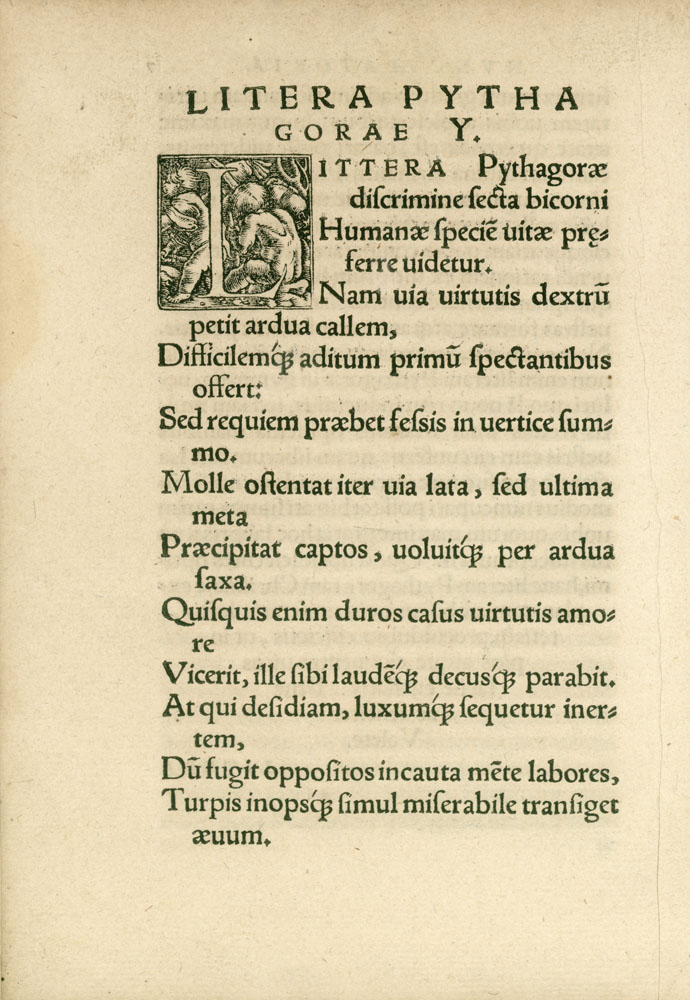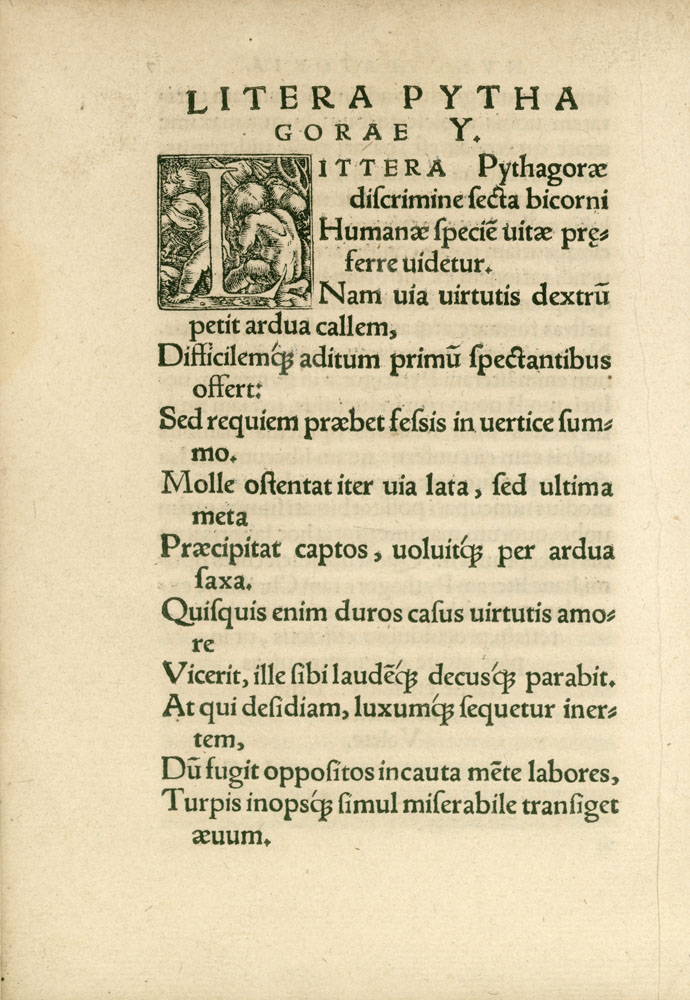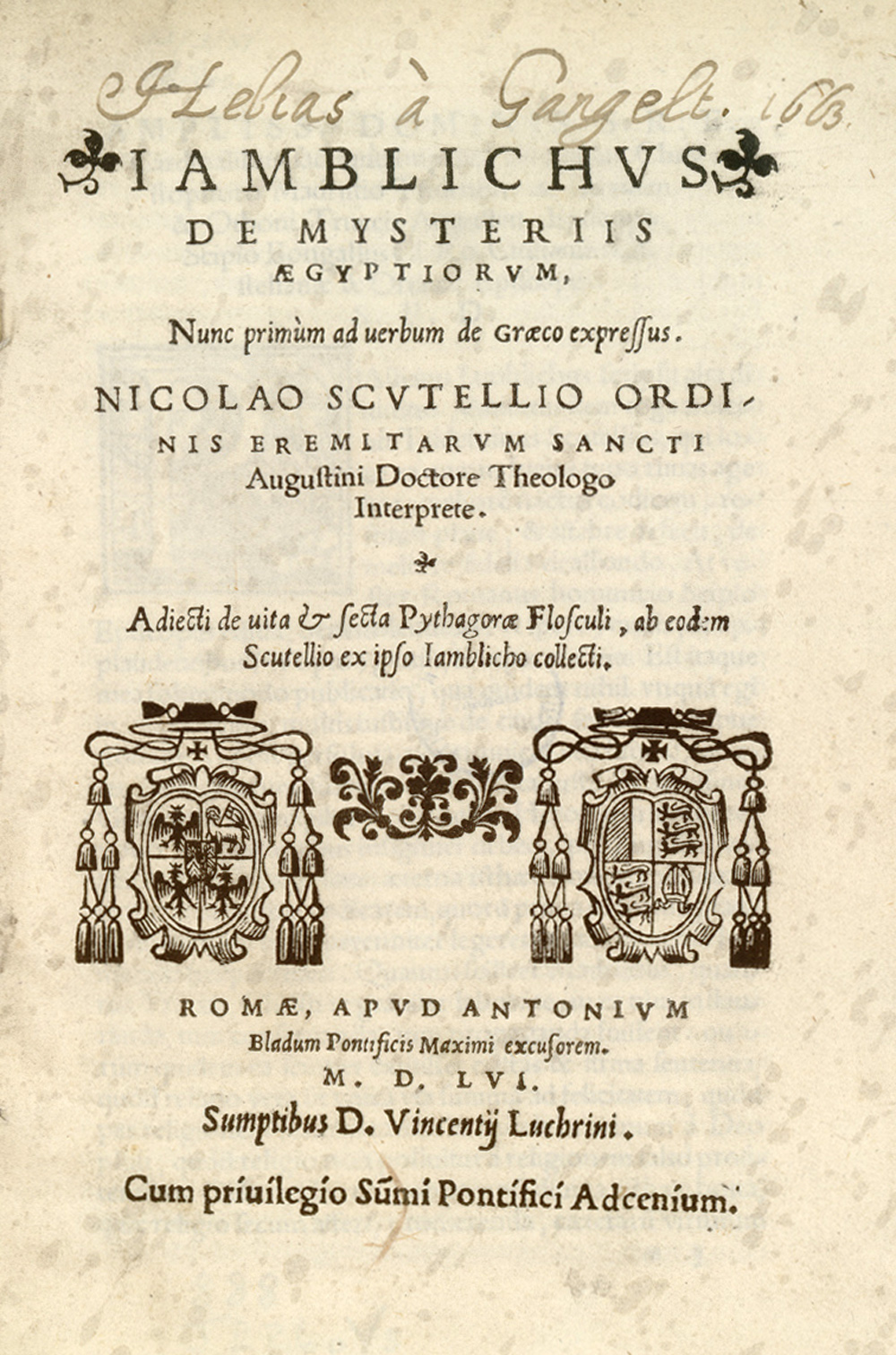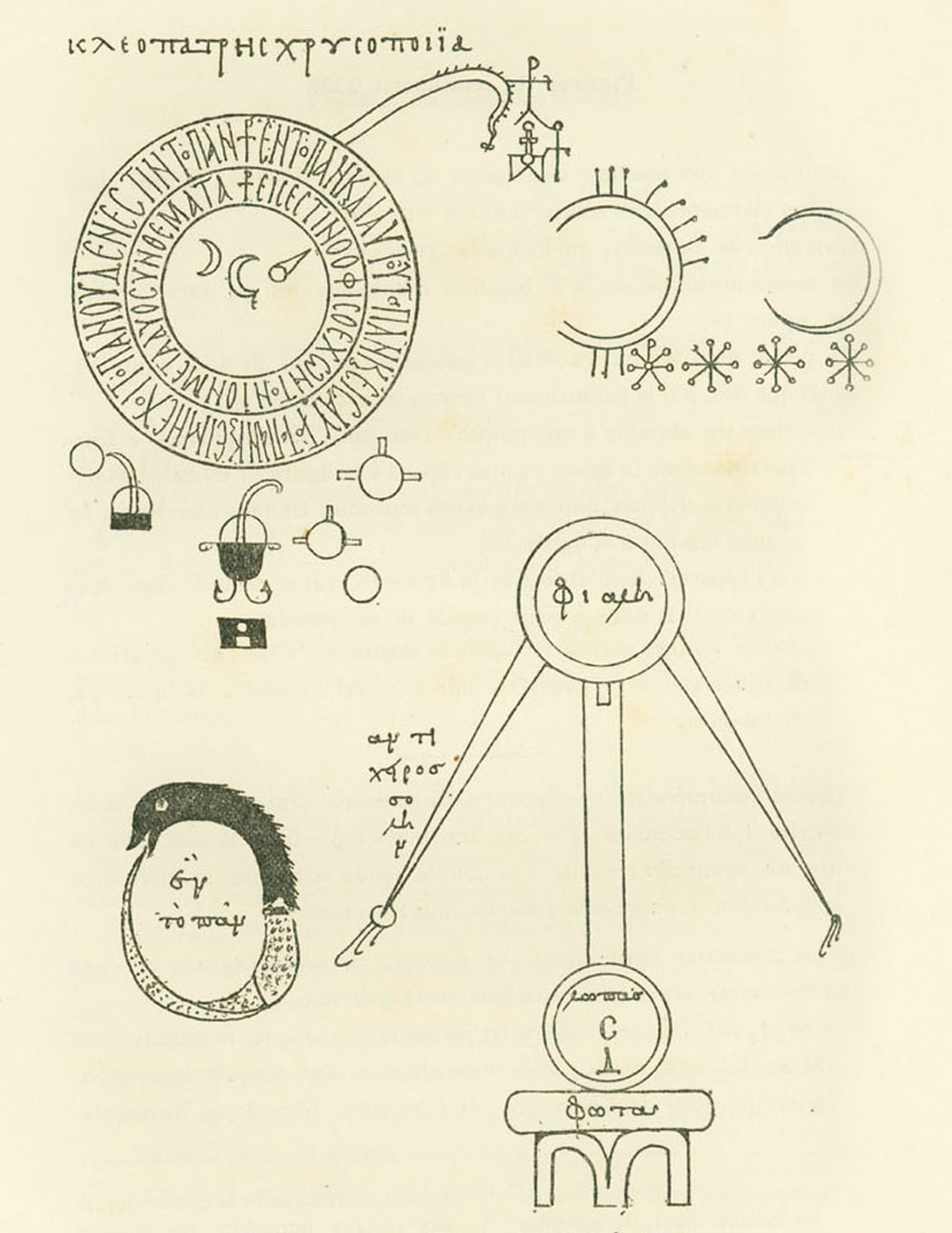
Ancient Origins

Rare B243 .L3
The Greek philosopher Pythagoras (6th century B.C.) and his later disciples taught that human souls are divine entities that have become trapped in a cycle of birth, death, and reincarnation. To escape this cycle and return the spirit to its divine state, they believed, one must lead a pure and contemplative life, developing the mind rather than indulging one’s animal appetites. As a symbol of this path to spiritual perfection, Pythagoreans used the Greek letter “Y†(upsilon). The stem of the letter represents the first portion of life, before we have chosen a path of vice or virtue. At adolescence, a split occurs, as the poem printed on the left-hand side of this book explains. The path to the right, it asserts, is difficult but ultimately leads to spiritual enlightenment and immortal bliss. The path to the left, though easier, ends in ruin and death.
The author of this pamphlet, the early Christian author Lactantius (ca. 240 – ca. 320), criticizes the Pythagoreans’ symbolic use of the letter “Y†for its implication that man is rewarded or punished for his actions during his life rather than after death, as Christian theology teaches. Nevertheless, in the Middle Ages and Renaissance, alchemists, among others, secretly incorporated the Pythagorean notion of the perfectibility of the soul into their own beliefs. Indeed, scholars have suggested that alchemy’s stated goal—the transmutation of common metals into gold by the discovery of the legendary Philosopher’s Stone—was really an allegory symbolizing alchemy’s real goal, the spiritual transformation of the alchemist himself and his ascension to a higher level of understanding by the discovery of hidden knowledge, either through contemplation (as Pythagoras had taught) or through the study of the natural world and its secrets. Not surprisingly, the letter “Y†is a common symbol in alchemical and other occult literature of the Renaissance.

Rare PA4220 .A7 D4 1556A
The ancient Syrian philosopher Iamblichus (ca. 245 – ca. 325) was a follower of Neoplatonism. Like Pythagoreanism, this mystical school of thought held that all human souls were once united with a transcendent being or god known as The One, but have since become separated from it and embodied in physical matter. The goal of Neoplatonism was to figure out how to retrace the soul’s steps back to its divine origins and achieve unity once again.
The earliest Neoplatonist philosophers believed that this could be accomplished through an act of the mind alone. Iamblichus, however, felt that meditation was effective for only a small minority. Most people, he believed, required something more sensual to help them “see the light†and ascend to a higher spiritual level. To achieve this, he practiced theurgy, or ritual magic, believing it would invoke the actions or presence of a god and unite human spirits with the divine.
Iamblichus’s teacher, Porphyry, was skeptical of theurgy and criticized many of his student’s ideas. De Mysteriis Aegyptiorum (On the Egyptian Mysteries) is a response to these criticisms. Iamblichus’s beliefs and practices were embraced in the fourth century by the Roman Emperor Julian, who sought unsuccessfully to replace Christianity with a form of Neoplatonic paganism. Christians destroyed many of the philosopher’s works in later generations, but those that survived attracted attention from scholars and occultists in Europe in the fifteenth and sixteenth centuries when interest in Neoplatonist philosophy was revived.

